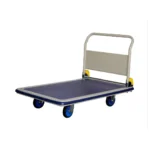Body contouring or body shaping can reduce fat and shape the body. It can also tighten the skin. Nonsurgical options include lipolysis, which uses heat, lasers, and cold. Although surgery is riskier and takes longer to recover, it can often provide more visible results.
What’s Body Contouring?
Body contouring or body sculpting is a surgical or medical procedure that aims at transforming a specific area of the body. This may include:
- Reduce excess skin.
- Reduce excess fat
- Re-shape the area.
What Types Of Body Contouring Are There?
Lipolysis is a nonsurgical method of contouring the body. There are many lipolysis options:
- Cryolipolysis uses extremely cold temperatures to kill fat cells (for instance, Cool Sculpting).
- Injection lipolysis is the injection of deoxycholic acid to target fat cells.
- Laser lipolysis is a method that uses lasers to eliminate fat cells (e.g. Zerona).
- Radio frequency lipolysis uses heat and ultrasound waves to target fat cells (for instance, truculent).
Sometimes the results may not be as expected.
There are many options for body contouring surgery.
- Tucks and lifts: These procedures are used to remove excess fat and skin. An abdominoplasty (tummy tuck), breast lift (thyroidectomy), and double chin surgery are some examples.
- Liposuction: Liposuction (lipo) suctions out fat deposits.
Why Body Sculpting Is Used?
Many people choose body sculpting for the desire to lose weight or achieve a particular shape. When diet and exercise don’t make a difference, body sculpting is often performed on certain areas.
Extra skin can be removed surgically to improve skin texture and appearance. These procedures are useful for people with excess skin following significant weight loss. Natural ageing can cause loose, saggy and wrinkled skin.
The body contouring procedure can be used to target any area of the body. These are some of the most common areas:
- Arms.
- Back.
- Love handles: Belly and flanks
- Buttocks.
- Neck and chin.
- Thighs.
What Happens Prior To Body Contouring?
You’ll first meet with a surgeon. You’ll discuss:
- Your goals.
- Your medical history, including allergies and past surgeries.
- All medications, both prescription and over-the-counter.
- Usage of alcohol, tobacco, or illegal drugs.
A healthcare professional will also:
- Measure the area you wish to improve.
- Take photos.
- Make recommendations and discuss your options.
You will need to sign a consent agreement form if you want to proceed. You are authorising the healthcare provider to perform this procedure by signing in. Furthermore, you agree to accept the risks and have realistic expectations.
- Your primary healthcare provider can perform blood work or a physical exam.
- Stop Smoking.
- Stop using certain medications, such as aspirin, NSCIDs, and herbal supplements.
What Happens In Liposuction Or Other Body Contouring Procedures?
The majority of cosmetic surgery takes place in a hospital, surgical centre or surgeon’s office. Depending on the type of procedure, it can take anywhere from 45 minutes to several hours.
The team might:
- Preparation: Mark the locations
- Place yourself on a surgical table to perform safety checks.
- Based on the procedure, administer anaesthesia — general or local —
- Prepare the skin for surgery.
- Trim excess skin.
- After the procedure is completed, close any incisions.
- Bandages are recommended.
What Happens In Non-Surgical Lipolysis
Most lipolysis procedures are performed in an office. A session lasts between 30 and 60 minutes.
The team might:
- You can get a hospital gown or robe for you to wear.
- Place yourself on a table or chair.
- You can use a tool, such as a paddle or a wand, to deliver ultrasound waves, laser beams and cold or heat depending on the type of lipolysis.
What Happens To The Body After Contouring?
This will help prevent swelling.
Recovery instructions will be provided by your surgeon. These instructions may include:
- Care for drains and change of bandages.
- Avoid over-activity and ambulation to avoid blood clots
- Notifying us of any problems — we will explain them in advance.
- Avoiding the sun
- To control or prevent infection, you can use medication (ointments, pills, etc.).
Nonsurgical body sculpting is done in a clinic or office. You will be able to leave the clinic immediately following the procedure. Most people don’t require a ride home and can continue their day as normal.
What Are Some Benefits Of Body Sculpting,
Many people who report body contouring success:
- A more defined and well-shaped body.
- A thinner, younger appearance
- Smoother skin
- Symptomatic improvement.
The results of surgery are often more visible and can be seen immediately. It may take several weeks or even months for nonsurgical options to show a significant difference.
What Are The Complications And Risks Of Surgery?
All procedures, such as lifts or tucks, are considered surgery and come with some risks. However, they are relatively rare. There are many risks that can be involved.
- Asymmetry is when both sides are different.
- Bleeding and blood clots.
- Anaesthesia can cause complications such as nausea, vomiting, or difficulty waking up.
- Nerves, blood vessels and muscles can be damaged.
- Hair loss near incisions.
- Haematite, a bloody pocket under the skin, may need to be drained.
- Incisions that are not properly healed
- Infection.
- Nerve injury can cause weakness, numbness, or changes in how your skin feels.
- Longer-lasting pain or sweller than you expected.
- Problem with the heart and lungs
- You may need to have follow-up surgery if you are unhappy with the results.
- Scarring, rippling, or discoloration of the skin.
- Skin discolouration and skin irregularities
Nonsurgical options have fewer risks and can include:
- Hives and rash.
- Soreness or pain.
- Red skin.
- Swelling.
- Results not satisfactory and they need to repeat.
How Much Time It Takes To Recover From Body Contouring?
Depending on the extent of work required and how large the incisions, recovery can take several weeks to months.
The recovery time for nonsurgical options is much faster. The majority of people return to work or other activities within a few hours after treatment.
Note From The Bella Pelle Cosmetic Clinic
When diet and exercise fail to work, body contouring can be used to reduce fat and shape specific areas. Your ideal weight will improve the quality of your results and reduce the risk of complications. Lipolysis can be performed non-surgically, while liposuction can be used to remove excess fat. Skin excision is another body-sculpting procedure that can tighten or smoothen any wrinkled skin. Discuss your options with your healthcare provider and the risks.







